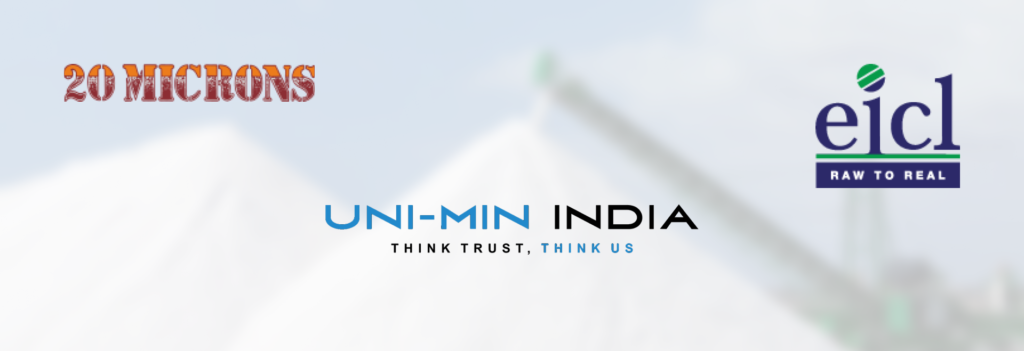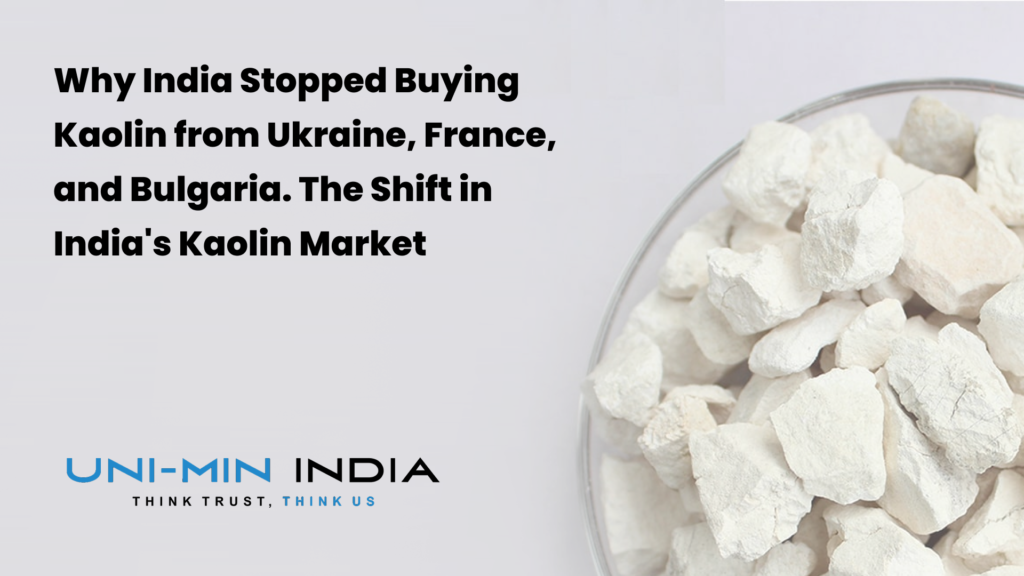India’s ceramic industry saw a big change in how it got its kaolin, the clay used in making ceramics. At first, India relied on Ukraine and Bulgaria. These places had lots of minerals and provided really good kaolin for glazing and painting ceramics.
Big Players in 2018: AKW, IMERYS, and KAOLIN EAD
In 2018, three big companies, AKW, IMERYS, and KAOLIN EAD, ruled the market with 85% share. Their kaolin was the gold standard for glazing and painting ceramics in India.
Why India Stopped Buying Kaolin from Ukraine, France, and Bulgaria…

A Game Changer in 2019: Local Alternatives
In 2019, Indian companies like UNI-MIN, 20 Microns, and EICL changed the game. They introduced high-quality glaze grade kaolin sourced right from India. Before this, they mainly supplied kaolin for other uses.
Local Competition Takes the Lead
Local companies started offering top-quality kaolin at lower prices. This made them a big hit, and they quickly grabbed a major share of the market. This shift made it tough for the foreign companies like AKW, IMERYS, and KAOLIN EAD.
The Impact of COVID-19
COVID-19 shook things up even more. Shipping costs shot up, hitting the foreign suppliers hard. AKW managed to hold on to some of its market share, but IMERYS and KAOLIN EAD saw their share drop to just 5-7% and 2-3% respectively.
2023: A New Dawn
2023 brings a steadier sea for shipping, but AKW, IMERYS, and KAOLIN EAD are still struggling. Local companies, with their improved quality, continue to dominate.
The Power of Local Manufacturers
Now, a whopping 90% of the market is in the hands of local manufacturers. Only 10% of kaolin used is imported. This trend looks set to continue, marking a future where India’s own kaolin is all it needs.
Turning India’s Kaolin into Global Solutions
India’s got an abundance of top-notch kaolin. The key lies in processing it right here to create a local alternative that’s just as good, if not better, than the imported stuff.
Contact Us for Your Kaolin Needs
Ready to experience the difference with our top-quality kaolin clay? Contact us now and let our experts assist you in finding the perfect solution for your industry.
Why did UNI-MIN, 20 Microns, and EICL start offering glaze grade kaolin?
In 2019, they recognized the changing needs of the market. So, they shifted their focus to producing glaze grade kaolin, a big departure from their earlier emphasis on other types.
How did COVID-19 affect India’s kaolin market?
The pandemic caused shipping costs to skyrocket, hitting imported kaolin suppliers like AKW, IMERYS, and KAOLIN EAD hard. This further boosted local manufacturers.
What made India switch from imported kaolin?
India’s booming ceramic industry needed top-notch kaolin for glazing and painting ceramics. Initially, they looked to Ukraine and Bulgaria, but competition from local makers offering cost-effective alternatives played a major role in the switch.
How did local manufacturers manage to grab such a big market share?
They got ahead by offering high-quality kaolin at much lower prices compared to imported options. This affordability factor propelled them to the top.
What challenges do AKW, IMERYS, and KAOLIN EAD face now?
Despite more stable shipping costs, these imported kaolin suppliers are still struggling due to the superior quality and competitive pricing of locally sourced alternatives.
What does the future hold for India’s kaolin market?
The future is looking very local. With 90% of the market under their belt, local manufacturers are all set to steer the industry, making imported kaolin a thing of the past.
In Conclusion
The transformation of India’s kaolin market showcases the country’s ability to make the most of its rich natural resources. From depending on Ukraine and Bulgaria to the present-day dominance of local makers, this journey reflects India’s strength in using what it has. The future is bright, with India not just meeting but surpassing global kaolin demands, ushering in a new era of self- sufficiency.


